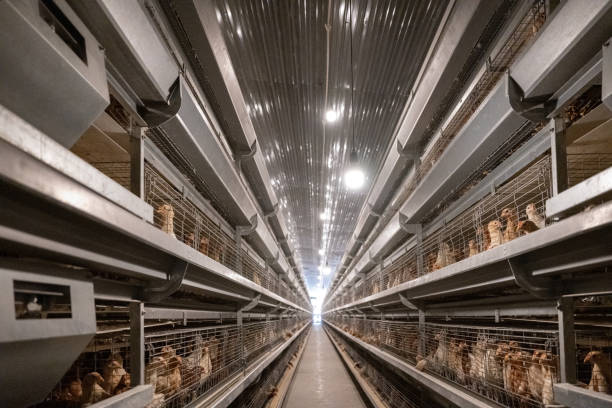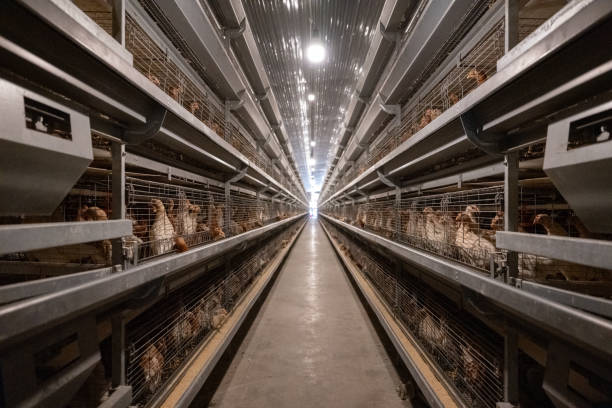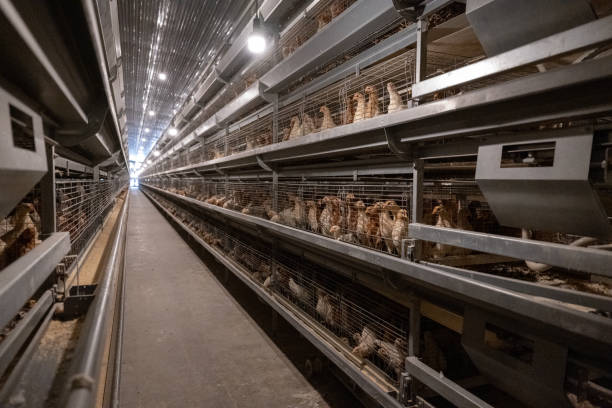
Investing in Layer Battery Cages: A Uganda Project Guide
Investing in Layer Battery Cages: A Uganda Project Guide
Uganda, with its burgeoning population and increasing demand for poultry products, presents a fertile ground for investment in egg production. For aspiring poultry farmers and established agricultural entrepreneurs alike, understanding the nuances of layer battery cage systems is paramount for success. This guide delves into the intricacies of investing in layer battery cages in Uganda, covering everything from initial planning and cage selection to operational management and profitability projections. Consider this your comprehensive roadmap to building a thriving egg production business.
Understanding the Ugandan Poultry Market
Before diving into the specifics of layer battery cages, it’s crucial to grasp the dynamics of the Ugandan poultry market. Egg consumption is on the rise, driven by factors such as population growth, urbanization, and increasing awareness of the nutritional benefits of eggs. This translates to a consistent demand, particularly in urban centers like Kampala, Jinja, and Mbarara.
However, the market also faces challenges. Price fluctuations, competition from imported eggs (though Uganda has made significant strides in protecting its local poultry industry), and disease outbreaks can impact profitability. A thorough market analysis, including understanding local consumer preferences, pricing trends, and potential market disruptions, is a critical first step. Talk to local market vendors, visit supermarkets, and research government reports on poultry production to gain a solid understanding of the landscape.
Why Layer Battery Cages? Weighing the Pros and Cons
Layer battery cages are a popular choice for commercial egg production due to several key advantages.
Space Efficiency: Battery cages maximize space utilization. This is particularly important in Uganda, where land can be a valuable resource. More hens can be housed per square meter compared to alternative systems like deep litter.
Improved Hygiene: Cages separate hens from their droppings, reducing the risk of disease transmission and improving overall flock health. This leads to lower mortality rates and reduces the need for expensive medication.
Easier Management: Cage systems simplify tasks like feeding, watering, and egg collection. This reduces labor costs and allows for more efficient management of the flock.
Higher Egg Production: Properly managed hens in battery cages often exhibit higher egg production rates due to optimized environmental control and reduced stress from social interactions.
Better Egg Quality: Eggs collected from cages are generally cleaner and less likely to be contaminated with bacteria.
However, it’s important to acknowledge the disadvantages and address them proactively:
Animal Welfare Concerns: Battery cages have faced criticism due to animal welfare concerns, primarily related to restricted movement. Selecting cages with adequate space per bird and providing enrichments like perches and scratch pads can mitigate these concerns. Responsible farming practices are key.
Initial Investment: The initial investment in a battery cage system can be significant, especially when compared to deep litter. However, the long-term benefits in terms of efficiency and productivity often outweigh the initial costs.
Maintenance: Battery cages require regular maintenance to ensure proper functioning. This includes cleaning, disinfection, and repair of equipment.
Planning Your Project: A Step-by-Step Guide
Investing in layer battery cages requires careful planning. Here’s a step-by-step guide to help you navigate the process:
Develop a Business Plan: A comprehensive business plan is your roadmap to success. It should include:
Executive Summary: A brief overview of your business concept.
Market Analysis: As discussed earlier, analyze the Ugandan poultry market.
Production Plan: Detail your planned flock size, egg production targets, and breeding cycle.
Operational Plan: Outline your management practices, including feeding, watering, disease control, and waste management.
Financial Projections: Develop realistic financial projections, including startup costs, operating expenses, revenue forecasts, and profitability analysis. This is crucial for securing funding.
Management Team: Describe your management team and their relevant experience.
Secure Funding: Explore various funding options, including:
Personal Savings: Utilizing your own savings demonstrates commitment to the project.
Loans: Approach banks and microfinance institutions in Uganda for agricultural loans.
Government Programs: Investigate government programs that provide financial assistance to poultry farmers. The Ugandan government often has initiatives to support agricultural development.
Investors: Consider seeking investment from private investors who are interested in the agricultural sector.
Site Selection and Preparation: Choosing the right location is crucial:
Accessibility: Select a site that is easily accessible to markets and suppliers.
Water Supply: Ensure a reliable and clean water source.
Electricity: Access to electricity is essential for lighting, ventilation, and other equipment.
Drainage: Proper drainage is critical to prevent waterlogging and disease outbreaks.
Biosecurity: Locate the farm away from residential areas and other poultry farms to minimize the risk of disease transmission.
Land Size: Ensure the land is large enough to accommodate your planned flock size and future expansion.
Local Regulations: Confirm that your proposed location complies with all local regulations regarding poultry farming.
Cage Selection and Procurement: Choosing the right cage system is paramount:
Cage Type: Select a cage type that suits your specific needs and budget. Options include A-frame cages, H-frame cages, and flat-deck cages.
Cage Capacity: Determine the appropriate cage capacity based on your planned flock size and desired egg production.
Material Quality: Choose cages made from durable and corrosion-resistant materials, such as galvanized steel. This ensures longevity and reduces the need for frequent replacements.
Ventilation and Lighting: Ensure the cage system provides adequate ventilation and lighting to promote hen health and egg production.
Feeding and Watering Systems: Select efficient feeding and watering systems that minimize waste and ensure the hens have access to adequate food and water. Nippler drinkers are a popular choice for cage systems.
Egg Collection System: Consider automated egg collection systems to reduce labor costs and improve egg handling.
Supplier Selection: Choose a reputable cage supplier with a proven track record of providing high-quality products and excellent customer service. Research different suppliers and compare prices and features. Livi Machinery, for example, is a well-known supplier exporting to African countries.
Construction and Installation: Ensure proper construction and installation of the cage system:
Foundation: Build a solid foundation to support the weight of the cages and hens.
Structure: Construct a sturdy structure to protect the cages from the elements.
Installation: Install the cages according to the manufacturer’s instructions.
Ventilation System: Install a proper ventilation system to ensure adequate airflow.
Lighting System: Install a lighting system that provides consistent and uniform light distribution.
Water and Feed Lines: Install water and feed lines correctly and ensure they are functioning properly.

Hen Procurement: Sourcing healthy and productive hens is critical:
Breed Selection: Choose a layer breed that is well-suited to the Ugandan climate and market demands. Popular breeds include Lohmann Brown, Hy-Line Brown, and Bovans Brown.

Source: Purchase chicks or pullets (young hens) from a reputable hatchery.

Vaccination: Ensure the chicks or pullets are properly vaccinated against common poultry diseases.
Age: Purchase pullets that are close to laying age (around 16-18 weeks old).
Operational Management: Implement effective management practices:
Feeding: Provide a balanced diet that meets the nutritional needs of laying hens. Consult with a poultry nutritionist to develop a feeding program.
Watering: Ensure a constant supply of clean and fresh water.
Disease Control: Implement a comprehensive disease control program, including vaccination, biosecurity measures, and regular monitoring.
Waste Management: Develop a proper waste management system to dispose of manure and other waste materials.
Lighting Program: Implement a lighting program that stimulates egg production.
Egg Collection: Collect eggs frequently to minimize damage and maintain quality.
Record Keeping: Maintain detailed records of egg production, feed consumption, mortality rates, and other relevant data. This helps you identify problems and optimize your management practices.
Marketing and Sales: Develop a marketing strategy to sell your eggs:
Target Market: Identify your target market, such as retailers, restaurants, and wholesalers.
Pricing: Set competitive prices that are profitable for your business.
Distribution: Develop a distribution network to deliver your eggs to your target market.
Branding: Consider branding your eggs to differentiate them from competitors.
Customer Service: Provide excellent customer service to build customer loyalty.
Profitability Projections: Crunching the Numbers
A realistic profitability projection is crucial for assessing the viability of your project. Consider the following factors:
Egg Production: Estimate the average number of eggs produced per hen per year.
Egg Price: Determine the average selling price of eggs in your target market.
Feed Costs: Calculate the cost of feed per hen per year.
Other Operating Costs: Include costs such as labor, electricity, water, medication, and maintenance.
Mortality Rate: Account for potential hen mortality.
Based on these factors, you can calculate your revenue, expenses, and profit margin. Remember to factor in potential fluctuations in egg prices and feed costs.
Addressing Challenges and Ensuring Sustainability
The Ugandan poultry industry faces several challenges, including disease outbreaks, price volatility, and competition from imports. To ensure the sustainability of your project, consider the following:
Biosecurity: Implement strict biosecurity measures to prevent disease outbreaks.
Diversification: Consider diversifying your business by producing other poultry products, such as meat.
Value Addition: Explore value-added opportunities, such as processing eggs into other products.
Market Research: Continuously monitor the market to identify opportunities and threats.
Networking: Build relationships with other poultry farmers and industry stakeholders.
Investing in layer battery cages in Uganda can be a profitable venture. However, it requires careful planning, effective management, and a commitment to sustainability. By following the guidelines outlined in this comprehensive guide, you can increase your chances of success and contribute to the growth of the Ugandan poultry industry. Remember to stay informed about industry best practices, adapt to changing market conditions, and prioritize the health and welfare of your birds. With dedication and hard work, you can build a thriving egg production business that benefits both you and the Ugandan community.
